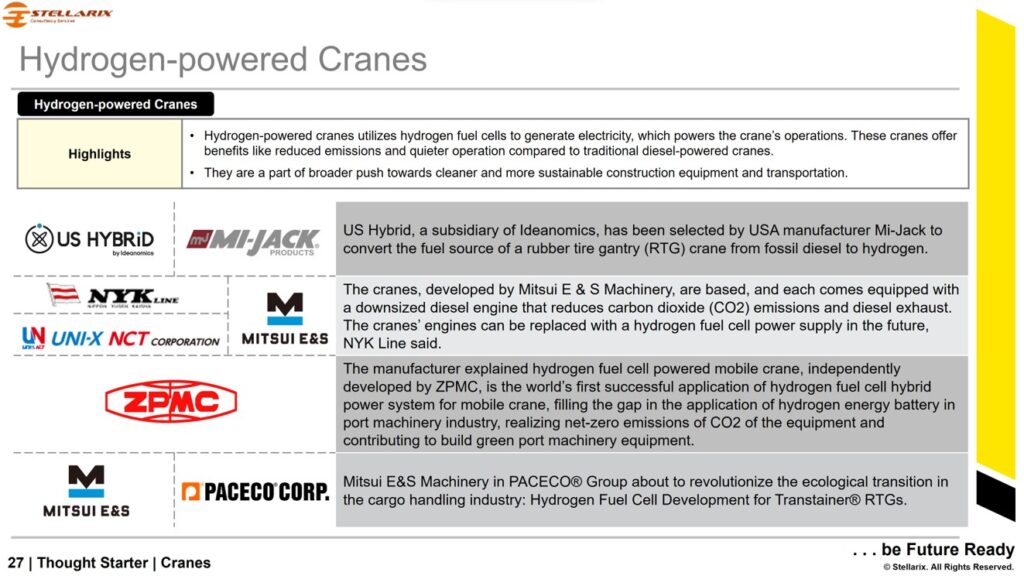Sustainable Power Sources for Cranes
The growing need for cranes in a number of industries, including as manufacturing, shipping, energy, and construction, is causing a substantial transition in the global crane industry. The necessity for renewable energy projects, urbanization trends, and the world’s growing infrastructure needs are all closely related to this demand. The construction industry continues to be the world’s greatest user of cranes as of Stellarix Research in early 2023, with significant investments in both residential and commercial projects. Furthermore, the shipping and logistics industry, which is essential to world trade, depends more and more on cutting-edge crane technology to handle cargo and run ports.
There is a noticeable shift towards sustainability within these industries due to environmental concerns and government regulations. This shift represents the fundamental change in how industries integrate sustainability into their products and operations. The demand for sustainable power sources for cranes is at the forefront of this transition, spurred by the dual challenges of reducing greenhouse gas emissions and lowering operational costs.
In the quest to achieve sustainability, electric and hybrid cranes are setting the standard because they offer significant fuel and carbon emission savings over conventional diesel-powered ones. These technologies are becoming more common in fields like urban construction projects and operations in or close to residential areas, where noise reduction and environmental impact are important factors. Electric cranes’ sustainability profile is further improved by including renewable energy sources, such solar and wind, into their power supply. This is in line with international initiatives to shift towards cleaner energy sources.
To stay competitive in the green revolution, one of our clients, a crane manufacturing company, approached Stellarix with the requirement to understand the current status of “Sustainable Power Sources for Cranes.”
Client Overview:
The client is a global player in crane manufacturing and is willing to explore sustainable energy sources for crane operations. The client was inclined towards getting insights related to new-age technologies to run cranes sustainably.
Engagement Objective:
The engagement aims to conduct a scouting study to identify the potential players working on sustainable power sources for cranes. It includes:
- Identification of current technologies, new innovations, research, and other latest activities in the relevant domain
- Identification of key players with innovative products and technologies
- Identification of sustainability impact offered by the different technologies
- Identification of competitors in this space
- IP trends and insights
Client Impact:
The provided report helped the client to analyze the potential key players and technologies that can be implemented in new cranes or retrofitted in old cranes to achieve sustainability. Further, the client was able to know the focus of the players with advanced technologies that can be used in crane operations with a specific focus on zero emission, sustainability, and climate neutrality.
The study also shared information regarding remote monitoring, predictive maintenance, and collecting data for analysis that can be run along with sustainable power options as an additional advantage for the client. Further, company profiling information shared in the report regarding prominent players that focus on reducing carbon emissions and achieving sustainability with innovations in their products helped the client choose the best technology to implement based on the specific needs of his current crane conditions.
Outcome Snapshot:




